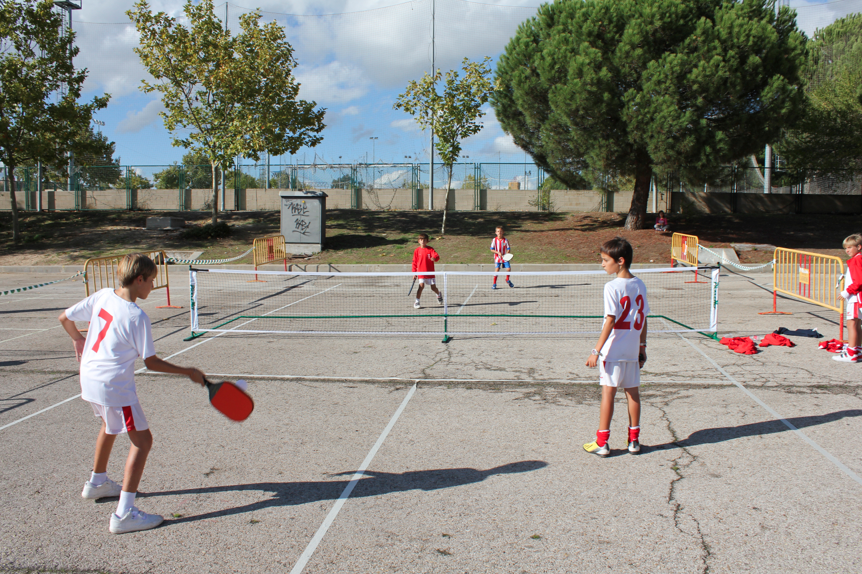So, you're here because you want to know how to say pickle in Spanish? Great! You're about to dive into a world of linguistic fun and deliciousness. Whether you're a foodie exploring international cuisine or just curious about words, this article has got you covered. Let’s start by breaking it down: the Spanish word for pickle is “el pepinillo.” Yes, it sounds fancy, but trust me, it’s as simple as eating a crisp cucumber. Stick around, and I’ll show you how to master this word like a pro.
Now, why would anyone want to know how to say pickle in Spanish? Maybe you're traveling to Spain or Latin America and want to impress locals with your language skills. Or maybe you're just tired of using Google Translate every time you’re at a Mexican restaurant. Whatever the reason, understanding how to say pickle in Spanish opens up a world of opportunities. From ordering food to impressing friends, it’s a skill worth learning.
Before we dive deeper, let me give you a heads-up: this article isn’t just about translating the word "pickle." We’re going to explore its pronunciation, cultural significance, and even some fun facts. By the end of this, you’ll be able to confidently say “pepinillo” without sounding like a tourist. Ready? Let’s get pickling!
Read also:Unveiling The Uhaul Lesbian Cup A Celebration Of Love Pride And Community
Why Learning How to Say Pickle in Spanish Matters
Let’s face it: pickles are more than just a snack. They’re a cultural phenomenon. In Spanish-speaking countries, pickles (or pepinillos) are often served as a side dish or garnish in various meals. Knowing how to say pickle in Spanish can help you navigate menus, communicate with locals, and even bond over food. Plus, it’s always cool to know random facts that make you sound smart at parties.
For example, did you know that in Spain, pickles are often used in tapas dishes? Or that in Mexico, they’re a staple in street food like tacos and burritos? Understanding these nuances not only enriches your knowledge but also helps you appreciate the diversity of Spanish-speaking cultures.
Breaking Down the Word: Pepinillo
Okay, so the Spanish word for pickle is “pepinillo.” But what does that even mean? Let’s break it down. “Pepino” means cucumber, and the suffix “-illo” makes it smaller or cuter, kind of like saying “little cucumber.” See? The Spanish language is all about making things sound adorable.
Now, here’s a fun fact: the pronunciation of “pepinillo” can vary depending on the region. In Spain, it’s pronounced as “peh-pee-NEE-yo,” while in Latin America, it might sound more like “peh-pee-NIL-lo.” Don’t worry if you can’t get it perfect right away. As long as you’re enthusiastic, people will understand what you mean.
How to Pronounce Pickle in Spanish
Pronunciation is key when learning any new word. To say pickle in Spanish correctly, follow these steps:
- Start with “peh” – it’s a short, sharp sound, like saying “pet” without the “t.”
- Next, say “pee” – think of the sound a baby bird makes.
- Then, add “NEE” – this should sound like the word “knee” without the “k.”
- Finally, finish with “yo” – it’s a soft, rolling sound, almost like a gentle sigh.
Put it all together, and you’ve got “peh-pee-NEE-yo.” Practice it a few times, and you’ll be saying it like a native in no time.
Read also:Monotone Chef Critic The Unsung Heroes Of The Culinary World
Cultural Significance of Pickles in Spanish-Speaking Countries
Pickles aren’t just a snack; they’re a cultural staple in many Spanish-speaking countries. In Spain, for instance, pickles are often served as part of a tapas platter, alongside olives, cheese, and cured meats. In Mexico, they’re a common addition to tacos, burritos, and even nachos. And in Argentina, they’re frequently used in empanadas and sandwiches.
But why are pickles so popular? It all comes down to taste. Pickles add a tangy, salty flavor that complements almost any dish. Plus, they’re versatile. Whether you’re making a sandwich or a salad, pickles can elevate the flavors and textures. No wonder they’re such a big deal!
Fun Facts About Pickles in Spanish Culture
Here are a few interesting tidbits about pickles in Spanish-speaking cultures:
- In Spain, pickles are often served with seafood dishes like paella.
- In Mexico, street vendors frequently offer pickled vegetables as a side dish.
- In Argentina, pickles are often paired with grilled meats during asados (barbecues).
Who knew pickles had such a rich cultural history? Now that you know, you can appreciate them even more.
Common Mistakes When Saying Pickle in Spanish
Learning a new language can be tricky, and Spanish is no exception. Here are some common mistakes people make when trying to say pickle in Spanish:
- Forgetting the double “L” sound – in Spanish, the double “L” is pronounced like a soft “Y.”
- Using the wrong gender – remember, “pepinillo” is masculine, so it’s “el pepinillo,” not “la pepinillo.”
- Over-pronouncing the “R” – in Spanish, the “R” is rolled, but not too aggressively. Keep it light and natural.
Don’t worry if you make these mistakes at first. Practice makes perfect, and locals will appreciate your effort to learn their language.
How to Use Pickle in Spanish Sentences
Now that you know how to say pickle in Spanish, let’s put it into practice. Here are some example sentences:
- “Me gusta el pepinillo con mi hamburguesa.” (I like pickles with my hamburger.)
- “¿Tienes pepinillos en la ensalada?” (Do you have pickles in the salad?)
- “El pepinillo es mi ingrediente favorito.” (The pickle is my favorite ingredient.)
See how easy it is to incorporate “pepinillo” into everyday conversation? With a little practice, you’ll be speaking Spanish like a pro.
Pro Tips for Using Pickle in Spanish
Here are a few tips to help you use “pepinillo” more effectively:
- Use it in context – don’t just throw the word out randomly. Make sure it fits the conversation.
- Practice with native speakers – nothing beats real-life practice. Find a Spanish-speaking friend and chat with them.
- Listen to native speakers – pay attention to how they pronounce and use the word. It’ll help you improve your skills.
With these tips, you’ll be using “pepinillo” like a native in no time.
Where to Find Pickles in Spanish-Speaking Countries
If you’re traveling to a Spanish-speaking country and craving pickles, here’s where to find them:
- Tapas bars in Spain – almost every tapas bar serves pickles as part of their menu.
- Street food vendors in Mexico – look for taco stands or burrito carts; they almost always have pickles.
- Supermarkets – most grocery stores in Spanish-speaking countries carry pickles, either fresh or jarred.
Don’t be afraid to ask for pickles when ordering food. Just say “¿Tienen pepinillos?” (Do you have pickles?) and you’ll be good to go.
How to Order Pickles in Spanish
Here’s how to order pickles in different situations:
- At a restaurant: “Quisiera pepinillos con mi orden.” (I would like pickles with my order.)
- At a street food stall: “¿Puede poner pepinillos en mi taco?” (Can you put pickles on my taco?)
- At a supermarket: “¿Dónde están los pepinillos?” (Where are the pickles?)
With these phrases, you’ll never have to go without pickles again.
Fun Activities to Practice Saying Pickle in Spanish
Learning a new word is more fun when you make it interactive. Here are some activities to help you practice saying pickle in Spanish:
- Watch Spanish cooking shows – pay attention to how chefs use and pronounce the word “pepinillo.”
- Play word games – challenge your friends to see who can use “pepinillo” in the most creative sentence.
- Try making pickles at home – while you’re at it, practice saying the word out loud.
Not only will these activities help you improve your Spanish, but they’ll also make learning more enjoyable.
Why Practice Matters
Practice is essential when learning a new language. The more you use “pepinillo” in conversation, the more natural it will feel. Don’t be afraid to make mistakes; they’re part of the learning process. And remember, the goal isn’t perfection – it’s progress.
Conclusion: Your New Word – Pepinillo!
And there you have it – everything you need to know about how to say pickle in Spanish. From pronunciation to cultural significance, we’ve covered it all. Now you can confidently order pickles in any Spanish-speaking country, impress your friends with your language skills, and appreciate the deliciousness of pepinillos.
So, what’s next? Keep practicing, keep exploring, and keep learning. Who knows? Maybe your next adventure will take you to a tapas bar in Madrid or a taco stand in Mexico City. And when it does, you’ll be ready to order like a local.
Before you go, don’t forget to leave a comment below and let me know what you think. Did you find this article helpful? What other words would you like to learn in Spanish? Let’s keep the conversation going!
Table of Contents
- Why Learning How to Say Pickle in Spanish Matters
- Breaking Down the Word: Pepinillo
- How to Pronounce Pickle in Spanish
- Cultural Significance of Pickles in Spanish-Speaking Countries
- Common Mistakes When Saying Pickle in Spanish
- How to Use Pickle in Spanish Sentences
- Where to Find Pickles in Spanish-Speaking Countries
- Fun Activities to Practice Saying Pickle in Spanish
- Conclusion: Your New Word – Pepinillo!


.png?format=1500w)